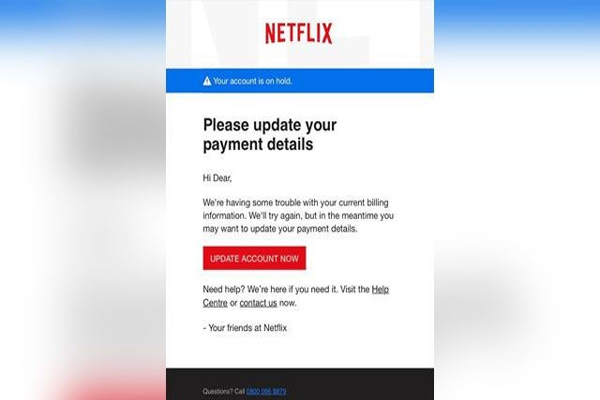RomWell Internet Guide
Online Safety
How to Recognize and Avoid Phishing Scams
Scammers use email or text messages to trick you into giving them your personal information. But there are several things you can do to protect yourself.
How to Recognize Phishing
Scammers use email or text messages to trick you into giving them your personal information. They may try to steal your passwords, account numbers, or Social Security numbers. If they get that information, they could gain access to your email, bank, or other accounts. Scammers launch thousands of phishing attacks like these every day — and they’re often successful. The FBI’s Internet Crime Complaint Center reported that people lost $57 million to phishing schemes in one year.
Scammers often update their tactics, but there are some signs that will help you recognize a phishing email or text message.
Phishing emails and text messages may look like they’re from a company you know or trust. They may look like they’re from a bank, a credit card company, a social networking site, an online payment website or app, or an online store.
Phishing emails and text messages often tell a story to trick you into clicking on a link or opening an attachment. They may:
- say they’ve noticed some suspicious activity or log-in attempts
- claim there’s a problem with your account or your payment information
- say you must confirm some personal information
- include a fake invoice
- want you to click on a link to make a payment
- say you’re eligible to register for a government refund
- offer a coupon for free stuff
On the picture above is a real world example of a phishing email. Imagine you saw this in your inbox. Do you see any signs that it’s a scam? Let’s take a look.
 The email looks like it’s from a company you may know and trust: Netflix. It even uses a Netflix logo and header.
The email looks like it’s from a company you may know and trust: Netflix. It even uses a Netflix logo and header.
 The email says your account is on hold because of a billing problem.
The email says your account is on hold because of a billing problem.
 The email has a generic greeting, “Hi Dear.” If you have an account with the business, it probably wouldn’t use a generic greeting like this.
The email has a generic greeting, “Hi Dear.” If you have an account with the business, it probably wouldn’t use a generic greeting like this.
 The email invites you to click on a link to update your payment details.
The email invites you to click on a link to update your payment details.
While, at a glance, this email might look real, it’s not. The scammers who send emails like this one do not have anything to do with the companies they pretend to be. Phishing emails can have real consequences for people who give scammers their information. And they can harm the reputation of the companies they’re spoofing.
Related Links:
 How to Protect Yourself from Phishing Attacks
How to Protect Yourself from Phishing Attacks
 How to Recognize and Report Spam Text Messages
How to Recognize and Report Spam Text Messages
Information Source: United States Federal Trade Commission, www.ftc.gov
The Power of Appreciation
Team work is the best tool for any business. Show some appreciation to your workers. Employee appreciation and personal thanks, whether in a small business or large corporation works magic. Every employee wants acknowledgment and personal appreciation, which is also the best way to keep them more productive, engaged, loyal and eager to contribute. Employee recognition is a powerful tool to create culture of engagement, so don't forget to offer personal thanks to your older team members. For people new in the business, experienced and older team members can provide support and guide every step of the way, if they are motivated.Did You Know?
Marketing a new product or service is very challenging, because billions of dollars are spent regularly developing and launching new products and services all over the world.Market failure is the most common reason for a product or service to fail. The other common failures are: financial failure (when product or service doesn't make any or enough money, cost of production and implementation of the service have not been sufficiently thought out in the specification stage, waste of time, etc.); organizational failure (poor management, miscommunication, lost productivity, failure to innovate, poor or bad collaboration, etc.) technical failure (when it doesn't work properly, wrong concept, poor implementation etc.) and political failure (when the source of failure is action by the government). Find out more...


